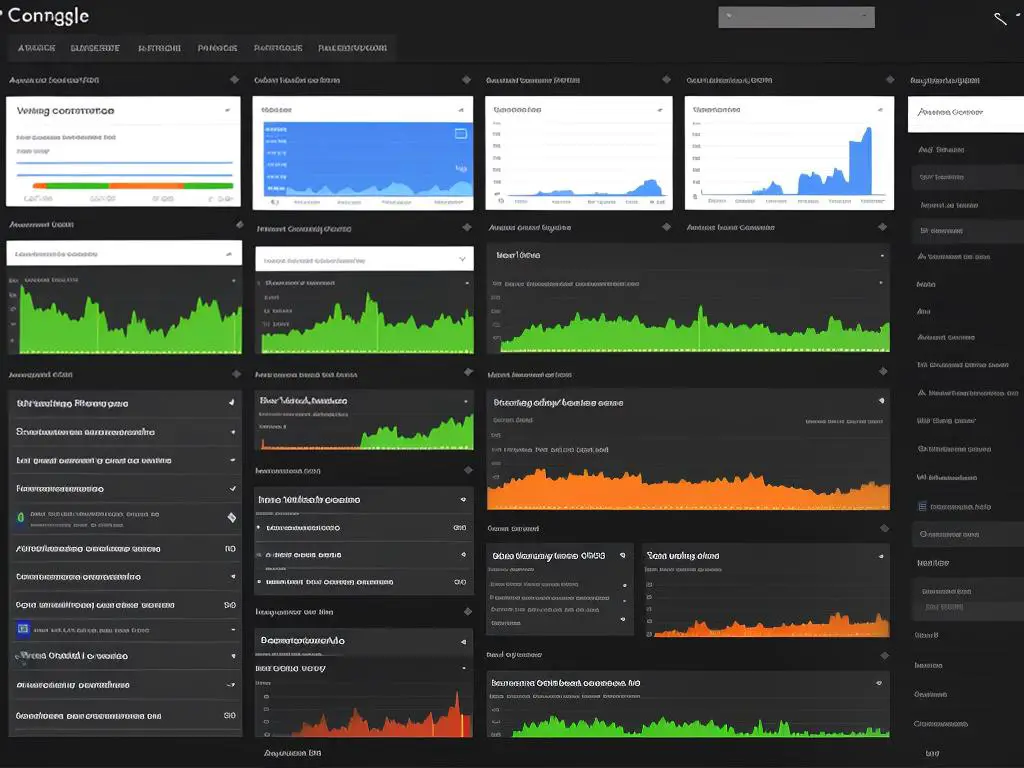In the fast-paced world of the digital age, where websites play a pivotal role in business success, maximizing your site’s visibility on Google’s search results is a paramount task. One of Google’s nifty tools that plays an indispensable role in optimizing website health, visibility and recoverability is Google Search Console. An understanding of this tool’s capabilities isn’t a luxury, but rather a necessity for anyone hoping to succeed in the online sphere. This discourse takes you through a comprehensive tour of Google Search Console, from its fundamental offerings to its advanced applied functionalities – right from setup and verification, to its usage in website recovery, and finally, the analysis of reports which drive strategic decisions.
Introduction to Google Search Console
Introduction: Harnessing the Power of Google Search Console
The digital age has brought a new dimension to businesses and the online marketing landscape. Among the pivotal tools available to aid businesses in tracking and optimizing their website’s visibility in Google’s search results is Google Search Console. It’s a free service that allows webmasters to monitor their site and resolve potential issues.
Understanding What Google Search Console Is
Google Search Console, formerly known as Google Webmaster Tools, is a service provided by Google free of charge. This tool’s primary purpose is to help businesses understand how Google views their website. It also plays a significant role in troubleshooting and optimizing site visibility in Google search results.
Often overlooked in the world of SEO, Google Search Console provides essential insights that can enhance your site’s performance, usability, and ultimately, your business’ online success.
The Basic Functionalities of Google Search Console
- Site Verification: Google Search Console allows website owners to verify their ownership of the site. This is a crucial step in making sure Google recognizes you as the site owner and you have the rights to access vital information about the site.
- URL Inspection: This feature allows you to check specific URLs on your site to see their status, any detected errors, and allows you to view the actual HTML that Googlebot is pulling from your site.
- Index Coverage Report: With this report, you can find out which of your site’s pages are indexed and appearing in Google’s search results. You can also find out about any errors or issues that might prevent your pages from being indexed.
- Performance Report: This report includes data about your site’s clicks, impressions, and position on Google Search. It’s a valuable resource for understanding how your website is performing in search results.
- Sitemap Submission: Sitemaps help Google understand the structure of your website. In Google Search Console, you can submit your website’s sitemap to aid Google in efficiently crawling and indexing your site’s pages.
- Mobile Usability Report: Given the prevalence of mobile searches, it’s important to have a mobile-friendly site. This report helps you identify any issues that might impact the usability of your mobile site.
Google Search Console for Website Recovery
In the event of any difficulties with your site, such as failed SEO efforts, website redesigns gone wrong, Google penalties, or unexpected decreases in search traffic, Google Search Console should be your first port of call. It helps you diagnose issues, implement solutions, and monitor the results.
Some recovery methods Google Search Console offers include identifying and resolving indexation issues, helping Google to understand the site structure better via the sitemap, and resolving mobile usability problems.
In conclusion, Google Search Console is an indispensable tool for anyone who owns or manages a website. It requires some learning and adaptation, but the insights it provides about how Google perceives your website are priceless and integral to your site’s success. With patience and persistence, you can use this tool to enhance your website’s performance and boost its visibility in search results.

Setup and Verification of Google Search Console
Introduction: Necessity of Google Search Console for Websites
Google Search Console is a free tool provided by Google that helps you understand and troubleshoot how Google views your website. It’s an essential resource for anyone who wants to increase their site’s visibility and recover lost traffic or rankings, and it provides invaluable insights such as which queries bring users to your site, which sites link to yours, mobile usability issues, and much more.
Steps to Set Up Google Search Console
Step 1: Sign in to Google Search Console
The first step is to head over to Google Search Console. It requires a Google account to sign in. If you don’t already have one, you can create one fairly quickly.
Step 2: Add a New Property
After logging in, you’ll need to add your website as a new property. A property is simply another name for a website or an app. Click on the dropdown menu at the top left of the dashboard, and select ‘Add property’.
Step 3: Enter your Website URL
In the box that appears, type in the URL of your website exactly as it appears in the browser address bar, including the http or https, www, or non-www as appropriate. Then click ‘Continue’.
Verification of Ownership for Google Search Console
Step 1: Choose a Verification Method
Google will present you with several verification methods. You can choose any of these methods depending on what suits you best, but the most commonly used methods are HTML file upload and Domain name provider.
Step 2: Verify Ownership
If you choose HTML file upload, Google will give you an HTML file to download. Upload the file to your website’s root directory.
If you opt for a Domain name provider, you will need to sign in to your domain name provider’s site and add a TXT record to your domain’s DNS configuration.
For both methods, Google provides detailed instructions on what you need to do.
Step 3: Confirm Verification
Once you’ve completed the necessary tasks for your chosen method, come back to Google Search Console and click ‘Verify’. Google will then check whether everything is in order.
Once successful, Google Search Console will present you with a confirmation screen.
Overview of Google Search Console
When you log into Google Search Console, you’ll find various sections and reports related to Performance, URL inspection, Index coverage, and more. Spend some time acquainting yourself with these tools, as they’ll be key to diagnosing and resolving any issues with your site’s visibility on Google.
By now, you have successfully set up and verified Google Search Console for your website. It’s an ongoing process of monitoring and troubleshooting your website’s performance on Google Search. Stay engaged and let the console work to keep your site performing at its best. It’s an investment of time that will pay off dividends in the long run.

Using Google Search Console for website recovery
Understanding the Importance of Google Search Console for Website Recovery
Google Search Console (GSC) is a vital tool provided by Google to help website owners understand their site’s presence in Google’s Search results. Whether your website has been compromised due to hacking, is experiencing decreased visibility because of penalties, or is struggling with indexing, Google Search Console can assist in identifying, diagnosing, and rectifying these issues.
Setting Up Google Search Console
- Open your web browser and visit Google Search Console.
- Click on the ‘Start Now’ button.
- Sign in with your Google account.
- Add a new property (your website URL) to your Google Search Console account.
- Verify your ownership of the website. Google will provide a few different ways to do this, so choose the option best suited to your tech abilities.
- Once the website has been verified, Google will start tracking and analyzing your website’s performance in its search results.
Troubleshooting Website Issues Using GSC
Google Search Console offers various sections and reports that can be used to identify and rectify website errors.
Identifying Search Appearance Issues
- Navigate to the “Performance” tab and review the search results report. This can help you understand how often your site appears in Google search results, for which queries, and how often users click your site.
- Take note of discrepancies or anomalies and research potential causes for decreased clicks or impressions.
Reviewing Indexing
- Under the “Coverage” section, GSC will show you the pages on your website that are not being indexed by Google.
- You can assess any errors here and gather information about why certain pages are not indexing properly – it could be due to coding errors, sitemap issues, etc.
Understanding Spam Issues
- Navigate to the ‘Security & Manual Actions’ tab.
- Click on ‘Manual Actions’ to see if your site has been penalized for violating Google’s guidelines.
- If it has, you can find more details about the penalty and suggestions for how to fix it.
Website Recovery Using GSC
If your website has been hacked, having verified ownership of your site in Google Search Console will be incredibly beneficial.
- You’ll receive notifications from Google about issues detected on your site, including potential security threats.
- Within the ‘Security Issues’ section, you’ll receive detailed information about the problem, the affected URLs, and steps on how to fix the issues.
- Once you’ve cleaned your website and ensured it’s safe, you can request a review from Google via GSC. This will help lift any applied penalties and help restore your website’s position in Google search results.
Conclusion
Potentially overwhelming at first, Google Search Console is a vital tool in understanding and maximizing your website’s presence in Google search. Take your time to familiarize yourself with its different features and don’t hesitate to use the wide range of Google resources and online communities should you need help. Regularly using GSC allows you to spot potential issues before they become problems, safeguarding the health and visibility of your website.

Google Search Console Reporting and Analytics
Introduction: Grasping the Power of Google Search Console
Google Search Console is an invaluable tool for webmasters, providing comprehensive reports and analytics to help you understand the detailed performance of your website in Google Search. By harnessing these features, you can plan and track the recovery strategy of your website when facing sudden ranking drops or navigation issues.
Step 1: Setting Up Google Search Console
Before proceeding with reporting and analytics, you need to have a Google Search Console account and verified ownership of your website. If you haven’t done so already, go to Google Search Console and follow the instructions to set up your account and verify your site.
Step 2: Exploring Dashboard
Once inside Google Search Console, the dashboard presents an overview of your site’s statistics, including total clicks, impressions, average click-through rate (CTR), and average position in SERPs (Search Engine Results Pages). This high-level snapshot can give immediate insights into your site’s performance and user engagement.
Step 3: Understanding Performance Report
Google Search Console’s Performance report is the next critical source of insights. This report tracks how often your site appears in Google search results, which queries cause your site to appear, your site’s average position, and more.
- Total clicks: The count of clicks from a Google search results page that landed the user on your website.
- Total impressions: The number of times any user saw your site’s link in Google search results.
- Average click-through rate (CTR): The ratio of users who click your site’s link to the number of total users who view the search result page.
- Average position: The average ranking of your site for search queries.
Step 4: Analyzing the Coverage Report
The coverage report on Google Search Console offers insights into the indexability of your site. It shows how many pages are indexed, any errors or issues that might prevent pages from getting indexed, and the status of pages excluded from indexing. Spend time to understand and fix all reported issues to improve your site’s visibility and ranking in Google Search.
Step 5: Utilizing URL Inspection Tool
This tool allows you to check a particular URL’s index status and understand why Google is or isn’t indexing that page. Additionally, the tool provides information on any crawling or loading issues with the page, enabling proactive issue resolution.
Step 6: Tracking Recovery Post Issues
With Google Search Console’s reporting and analytics capabilities, you can identify problems that affect your site’s performance and address them immediately. Post recovery, keep monitoring the performance of your website to track improvements or spot recurring issues.
Remember, while Google Search Console can provide valuable data to understand your site’s performance, it’s your proactive steps towards finding solutions and constant optimization that can truly help your site recover and thrive in the Google search environment.

Google Search Console stands as a beacon in the world of website management and SEO, offering a plethora of opportunities to optimize and troubleshoot your site in order to feature prominently on Google’s search results. It guides you hand-in-hand through website recovery, post issues such as hacking or penalties, ensuring you emerge stronger and better than ever. Additionally, its robust reporting and analytics provide you with insight-driven strategies for further growth and improvement. Truly, mastering Google Search Console is like acquiring an indispensable ally in your journey towards owning an immensely successful online presence, ensuring your website not only survives but thrives in the highly competitive landscape of the digital world.

